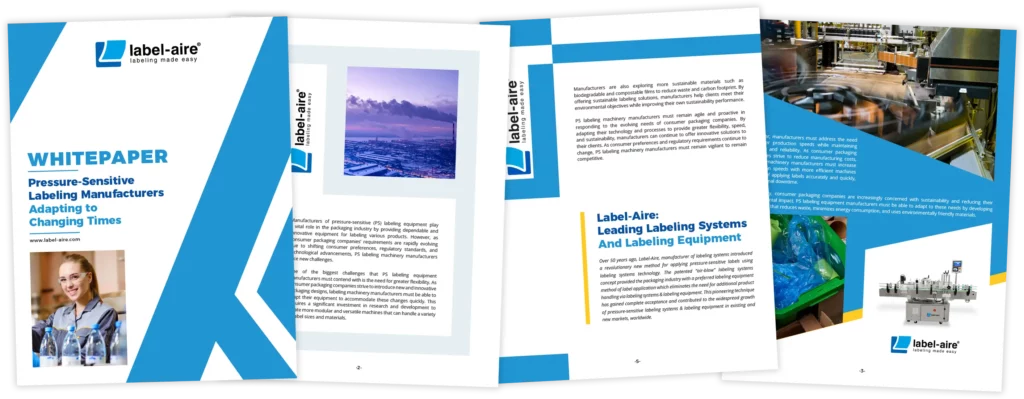Challenges for Today’s Label Converting Companies
Introduction
- In the dynamic and intricate world of label production, converting companies stand at the crossroads of technology, sustainability, and evolving market demands.
- These businesses, pivotal in transforming raw materials into finished labels, face an array of challenges that test their adaptability, efficiency, and innovation.
- This article delves into the core issues confronting today’s label converting companies, examining the implications of each and exploring potential pathways forward.
Technological Evolution and Integration
One of the most significant challenges is the rapid pace of technological change. Advanced printing techniques, such as digital printing, offer unprecedented customization and flexibility, necessitating substantial investment in new equipment and training. However, integrating these technologies into existing production lines can be complex and costly. Companies must balance the benefits of new technology—such as increased speed, efficiency, and capability—with the financial and operational risks of implementation.
Moreover, the rise of Industry 4.0—characterized by smart automation, real-time data exchange, and interconnected machinery—presents both opportunities and obstacles. While these advancements can streamline production and reduce waste, they require a foundational shift in how companies approach manufacturing, from investment in intelligent systems to training employees in digital skills.
Sustainability and Regulatory Compliance
Sustainability is no longer a buzzword but a business imperative. Consumers and regulatory bodies increasingly demand eco-friendly products, pushing label converting companies to scrutinize every aspect of their operation, from the materials used to the production processes. The challenge lies in sourcing sustainable materials that don’t compromise quality or increase costs prohibitively. Biodegradable, recycled, and renewable materials are often more expensive and may not perform as well as traditional options, presenting a significant hurdle for companies aiming to green their operations.
Regulatory compliance adds another layer of complexity. Globally, regulations regarding packaging and labeling are becoming stricter, with a focus on reducing environmental impact. Complying with these evolving standards requires constant vigilance and adaptability, translating into increased operational costs and the need for ongoing legal and technical expertise.
Market Dynamics and Consumer Expectations
- The label converting industry is not immune to the pressures of a fast-paced, demand-driven market.
- Consumers expect high-quality, innovative, and customized labeling solutions that meet their needs and values, such as traceability and sustainability.
- Meeting these expectations requires companies to be agile, with the ability to quickly pivot production lines and embrace short-run, on-demand printing without sacrificing efficiency or increasing costs.
- ADDITIONALLY, globalization has expanded market opportunities but also intensified competition.
- Label converters must differentiate themselves in a crowded market, offering unique solutions and superior service.
- This necessitates not only technological investment but also a deep understanding of market trends, consumer behavior, and the competitive landscape.
Supply Chain Vulnerabilities
- Recent global events have underscored the fragility of international supply chains.
- Label converting companies often rely on a complex network of suppliers for materials and equipment.
- Disruptions in this network—whether due to pandemics, geopolitical tensions, or natural disasters—can lead to material shortages, increased costs, and delayed production schedules.
- Building a resilient supply chain is critical but requires diversifying suppliers, increasing inventory levels, and potentially reshaping the supply chain to be more localized, each with its own challenges and costs.
Skilled Workforce Shortage
- The label converting industry’s technological advancements and the shift towards more sustainable practices demand a workforce with a new set of skills.
- Finding and retaining skilled workers who can operate advanced machinery, understand digital systems, and innovate in material science is increasingly difficult.
- The industry competes with other sectors for these talents, often in a labor market that is experiencing broader demographic shifts and skill shortages.
Pathways Forward
Addressing these challenges requires a multifaceted approach, emphasizing flexibility, innovation, and resilience. Investing in technology and automation can enhance efficiency and agility, allowing companies to respond more rapidly to market changes. Simultaneously, fostering a culture of innovation can lead to breakthroughs in sustainable materials and practices, aligning with consumer expectations and regulatory requirements.
Moreover, developing strategic partnerships—with technology providers, material suppliers, and educational institutions—can mitigate some risks associated with technological integration, supply chain disruptions, and workforce development. Collaborative networks can provide access to new technologies, more resilient supply chains, and talent pipelines.
Ultimately, the ability of label converting companies to navigate these challenges will depend on their capacity to anticipate change, invest in their future, and remain steadfastly committed to innovation and sustainability. As the landscape continues to evolve, those who can adeptly manage these hurdles will not only survive but thrive, leading the way in a rapidly transforming industry.
Label-Aire: Leading Labeling Systems And Labeling Equipment
Over 50 years ago, Label-Aire, manufacturer of labeling systems introduced a revolutionary new method for applying pressure-sensitive labels using labeling systems technology. The patented “air-blow” labeling systems concept provided the packaging industry with a preferred labeling equipment method of label application which eliminates the need for additional product handling via labeling systems & labeling equipment. This pioneering technique has gained complete acceptance and contributed to the widespread growth of pressure-sensitive labeling systems & labeling equipment in existing and new markets, worldwide.



